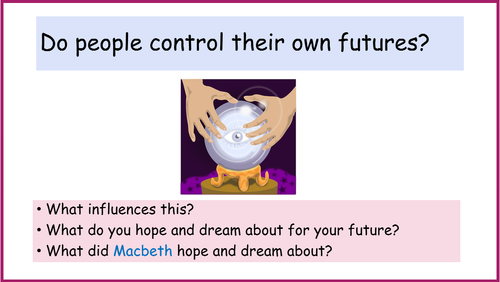










A lesson that focuses on the witches’ use of word play and how this influenced Macbeth’s course of action. This includes a lesson plan, lesson presentation and differentiated activity.
This lesson allows for a more detailed consideration of the role of the witches, and the use of the deliberately misleading in order to influence, but it is more than this, as it aims to foster a love of words and wordplay with the children. (There are some nice PSHE elements in terms of things people might say nowadays that are not actual lies, but not actually the truth, too.) There’s a great link to a clip from Shrek II where Pinocchio is attempting not to give away Shrek’s position but cannot lie. He uses double negatives and babble to mislead without lying!
Children will really enjoy attempting to solve the riddles, which have been pitched so that at least 1 or 2 per bundle should be solved, possibly more. I’ve tried to source new ones, but there are a couple of oldies, too.
The riddles should be distributed in tables or groups of 4-6. They are read and discussed in the groups. Once the solutions are given, pupils consider how the language was misleading/what it was about the riddle that was deceptive. This can be a piece of written work, or remain a spoken activity.
I have used this resource in Year 5, with a re-written story version of Macbeth, once the story had been completed, so they could appreciate the significance of the second prophecies. We had puns and riddles galore for weeks afterwards!
I hope you enjoy using this resource. I would be grateful if you could leave a review, once you have used it in class.
Something went wrong, please try again later.
This resource hasn't been reviewed yet
To ensure quality for our reviews, only customers who have purchased this resource can review it
Report this resourceto let us know if it violates our terms and conditions.
Our customer service team will review your report and will be in touch.